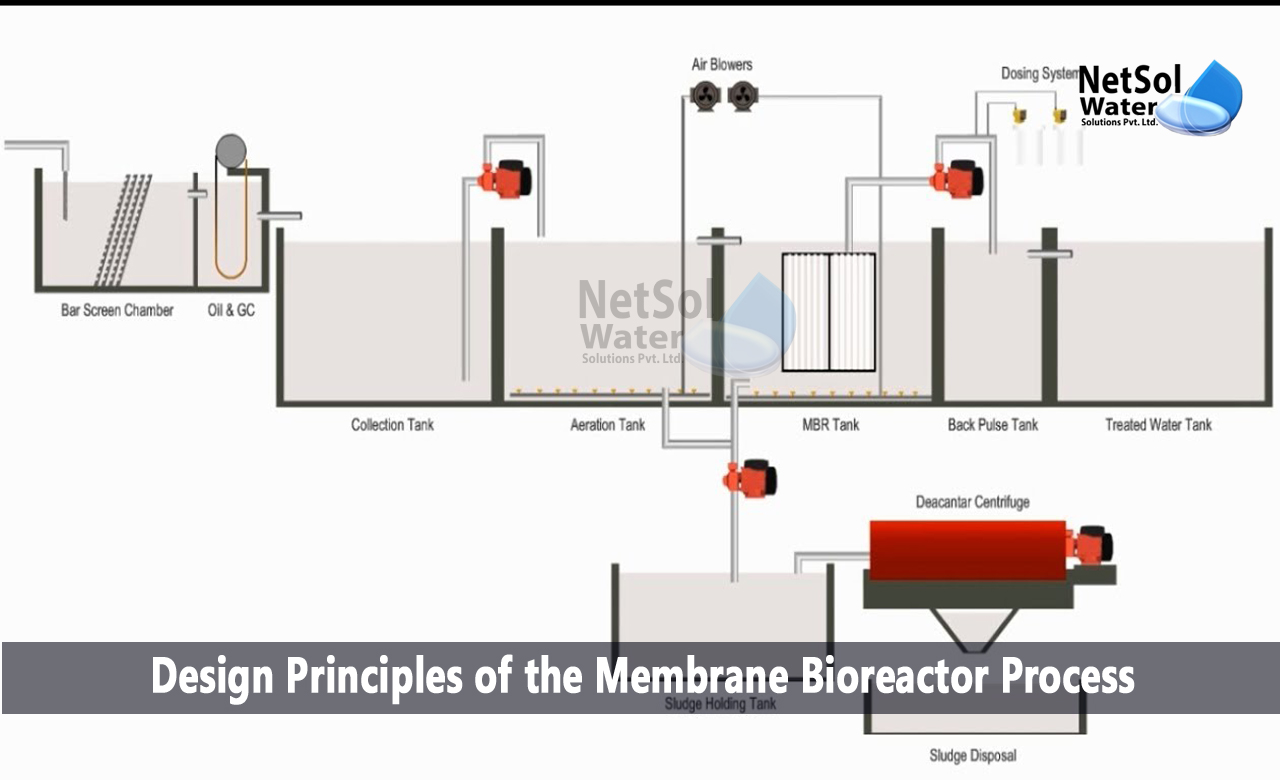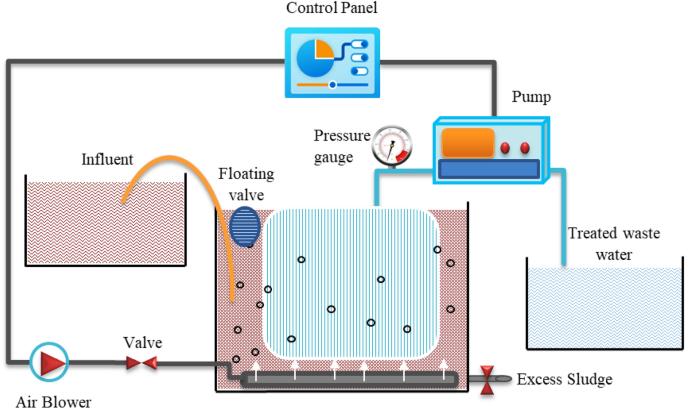How Membrane Bioreactor Technology Is Revolutionizing Wastewater Treatment
How Membrane Bioreactor Technology Is Revolutionizing Wastewater Treatment
Blog Article
The Benefits of Membrane Layer Bioreactors in Lasting Wastewater Monitoring
Membrane layer bioreactors (MBRs) represent a crucial improvement in lasting wastewater administration, effectively merging biological treatment with innovative membrane purification innovation. This integration not just boosts effluent high quality by successfully removing impurities yet additionally opens opportunities for water reuse in different applications, hence attending to the pressing need for source conservation. In addition, the portable layout of MBRs adds to significant decreases in environmental effect and functional expenses. As the need for sustainable services heightens, checking out the multifaceted advantages of MBRs may disclose unexpected ramifications for the future of wastewater therapy systems.
Summary of Membrane Bioreactors
Membrane bioreactors (MBRs) stand for a considerable improvement in wastewater therapy technology, incorporating organic deterioration with membrane layer purification to enhance the efficiency of the treatment process. This innovative system incorporates the advantages of standard activated sludge processes with membrane modern technology, enabling improved solid-liquid splitting up. MBRs make use of semi-permeable membrane layers to separate treated water from biomass, causing top notch effluent that can be reused or safely discharged right into the setting.
The functional style of MBRs usually involves a bioreactor where microbes break down raw material, adhered to by a membrane system that filters the blended alcohol. This arrangement not only lessens the footprint of the therapy center but additionally permits for greater biomass focus and decreased hydraulic retention times. MBRs are qualified of treating a broader variety of pollutants, including nutrients and pathogens, making them ideal for different applications, from community wastewater treatment to industrial effluent handling.
The integration of MBRs right into wastewater management systems is a sign of a growing fad towards sustainable and reliable methods in environmental design. Their capacity to create premium effluent while minimizing room requirements placements MBR innovation as an essential player in contemporary wastewater treatment remedies.
Boosted Effluent Top Quality

The membrane layer purification procedure acts as a physical barrier, allowing the retention of microbes and particulate issue, which adds to a clearer and cleaner effluent (Membrane Bioreactor). MBRs operate at greater biomass focus than traditional activated sludge systems, promoting more reliable biodegradation of contaminants. This results in a decrease in biochemical oxygen demand (BOD) and overall suspended solids (TSS) degrees in the final effluent
In addition, MBRs show outstanding performance in dealing with difficult wastewater make-ups, such as industrial effluents and wastewater with high nutrient lots. Because of this, the effluent created is commonly of greater quality, permitting for more adaptable disposal options and reduced ecological effect. Eventually, the enhanced effluent top quality accomplished with MBR technology underscores its essential role ahead of time lasting wastewater management practices.
Water Reuse Opportunities
The top quality effluent produced by membrane layer bioreactors (MBRs) opens up substantial opportunities for water reuse in numerous applications. MBRs properly eliminate contaminants, consisting of pathogens, suspended solids, and natural matter, resulting in treated water that fulfills or surpasses governing requirements for reuse. This high quality enables for the execution of water recycling efforts across varied sectors.
One famous application remains in agriculture, where treated wastewater can be made use of for irrigation, promoting lasting farming techniques while conserving fresh water sources. In addition, MBR-treated effluent can be made use of for commercial procedures such as cooling, cleaning, and as a procedure water resource, significantly decreasing the need for potable water in these procedures.
In city atmospheres, MBRs assist in making use of recovered water for landscape watering, commode flushing, and various other non-potable uses, adding to the overall resilience of water systems. Moreover, the assimilation of MBR modern technology in decentralized systems help in taking care of local water demands, specifically in water-scarce areas.
Reduced Environmental Impact
How can the adoption of membrane layer bioreactors (MBRs) contribute to a minimized ecological impact in wastewater monitoring? MBRs dramatically boost the therapy efficiency of wastewater while lessening ecological disruptions. Membrane Bioreactor.
Moreover, MBRs run at reduced hydraulic retention times compared to conventional systems, leading to smaller treatment plant footprints. This small layout minimizes land usage, thus maintaining click this site all-natural environments and biodiversity. The process additionally produces much less sludge than traditional methods, reducing disposal difficulties and reducing greenhouse gas discharges related to sludge management.
Additionally, MBRs assist in the healing of beneficial sources, such as water and nutrients, adding to a round economy. By allowing water reuse for watering or commercial processes, MBRs help reduce freshwater shortage, therefore advertising sustainable water make use of techniques. Ultimately, the adoption of MBR technology represents a considerable stride towards lessening the environmental impact of wastewater management systems.
Economic Advantages of MBRs

Additionally, MBRs promote the manufacturing of high-grade effluent, which can be reused for different applications, such as farming irrigation and industrial procedures - Membrane Bioreactor. This reuse capability can substantially decrease water purchase costs, giving a monetary read here reward for markets blog here dealing with strict water guidelines
The portable design of MBR systems likewise leads to minimized land demands, which is particularly valuable in urban areas where real estate is costly. By lessening room, markets and communities can minimize land procurement and upkeep expenditures.
Moreover, MBRs often call for less frequent maintenance and have a longer life-span than traditional systems, even more adding to set you back financial savings. In summary, the financial benefits of MBRs-- ranging from lowered functional costs to land cost savings and effluent reuse-- make them an engaging choice for sustainable wastewater management, supplying both lasting and instant monetary benefits.
Conclusion
In addition, MBRs add to lowered environmental effects through compact layouts and reduced sludge generation. Economic advantages further improve their stability, making MBRs an encouraging service for addressing the challenges of wastewater therapy and advertising sustainable resource administration.
Membrane bioreactors (MBRs) represent a crucial improvement in sustainable wastewater management, efficiently merging organic treatment with advanced membrane layer filtration modern technology.Membrane layer bioreactors (MBRs) represent a substantial development in wastewater therapy modern technology, incorporating organic destruction with membrane layer purification to boost the effectiveness of the therapy procedure.Achieving enhanced effluent high quality is one of the most considerable benefits of using membrane layer bioreactors (MBRs) in wastewater therapy.In addition, MBRs show excellent efficiency in treating tough wastewater make-ups, such as commercial effluents and wastewater with high nutrient loads.Incorporating membrane bioreactors (MBRs) right into wastewater administration not only reduces environmental impact however likewise presents significant economic advantages.
Report this page